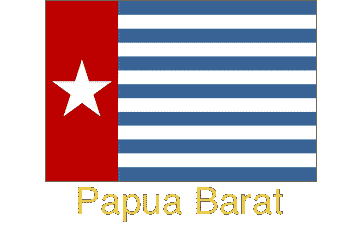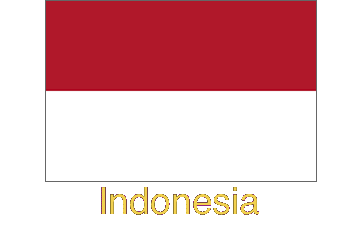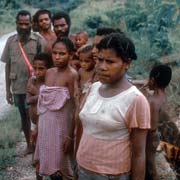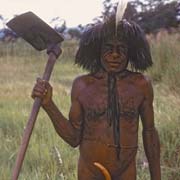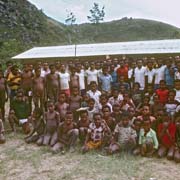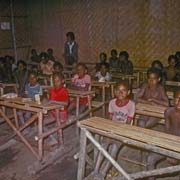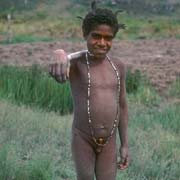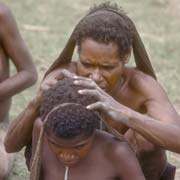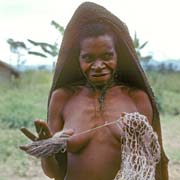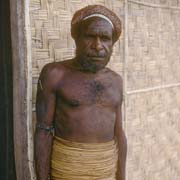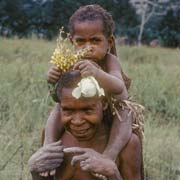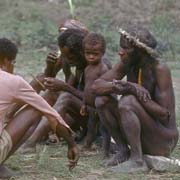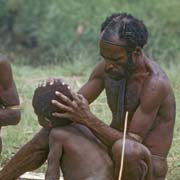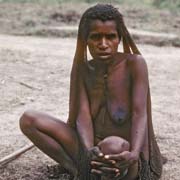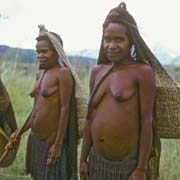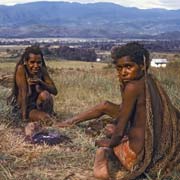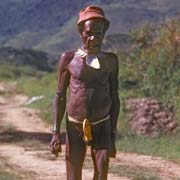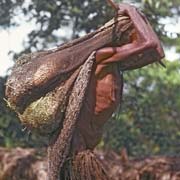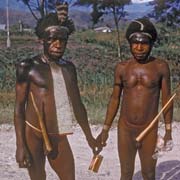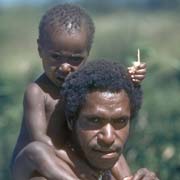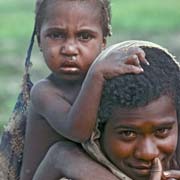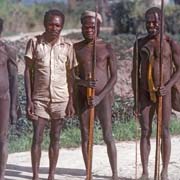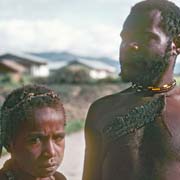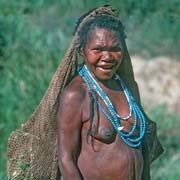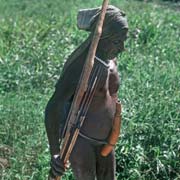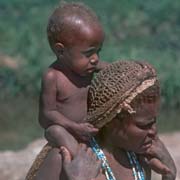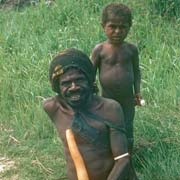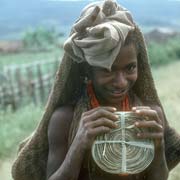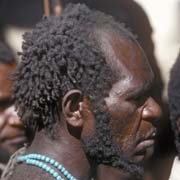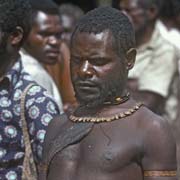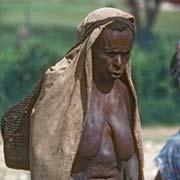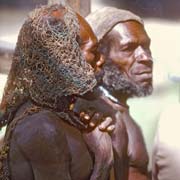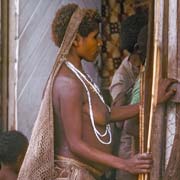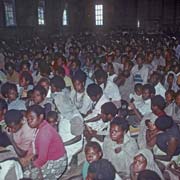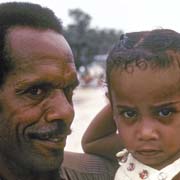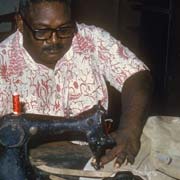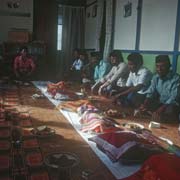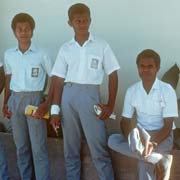Photos of the people of West-Papua
People of West-Papua
West Papua has a population of around 3.6 million people, with in the interior mainly ethic Papuan tribes and along the coast a mixture of Papuans, Melanesians and Austronesian groups, including Indonesians; a great deal of intermarriage has taken place in the coastal regions, where migrants have also settled, a result of Indonesia's "Transmigrasi" policy.
you may then send it as a postcard if you wish.
It is estimated there are at least 312 different tribes and there may still be people who yet haven't been contacted by the outside world. One of the most populous tribes is the Dani, who live in the Baliem Valley, deep in the interior. They still strongly cling to their culture and and many still wear their minimal clothing; men and boys wear the "holim" (also called "koteka"), a penis sheath made from a gourd that is cultivated especially for this purpose; these can have widely differing shapes and sizes and are attached with a string around the waist and another round the scrotum. They often grease their bodies with pig fat and soot, for warmth and may wear ornamentation like shell necklaces, string hair nets and sometimes feathers from birds of paradise. Girls and unmarried women may wear grass skirts while married women wear "yokal", low hanging skirts of fibre coils or seeds strung together. Most small children go naked. A campaign to clothe the natives, "Operasi Koteka", in which men were given a pair of shorts, an Indonesian flag and a picture of president Suharto, didn't have a lasting effect, but people who identify with Christian missions may wear western clothing.
The same applies to the other groups, like the Ekari, a people who live around the Paniai lakes; their language is the second-most populous language in West Papua, after the Western Dani. During the Second World War the Ekari people were vital to the war effort of Vic de Bruyn, a district officer in Netherlands New Guinea; he was looked after by the Ekari during the Japanese occupation and was able to send intelligence to Australia; his story was written by Dutch author Anthony Van Kampen, who dubbed him "Jungle Pimpernel". A related group is the Moni. The town of Enarotali has a Catholic church and many have converted to Catholicism, but still adhere to their traditional beliefs as well.
